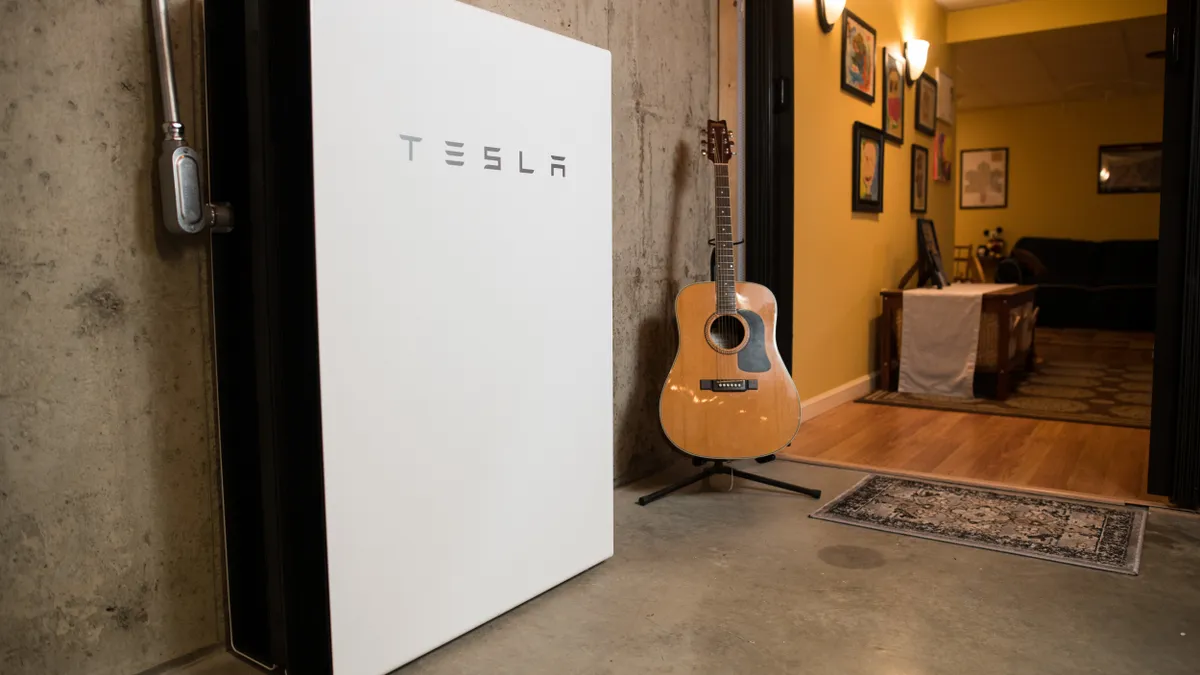The following is a contributed article by Seth Mullendore, vice president and project director for Clean Energy Group.
The battery storage market for homes and businesses has been steadily growing over the past few years, driven by falling battery prices, demand for reliable backup power and the potential to cut energy expenses. However, the uptake of customer-sited battery storage has not been equally distributed across geographic regions or customer types, with higher-income households driving residential sales and larger energy users with high utility demand charges leading the commercial sector. This has left many behind, particularly lower-income households and small-commercial properties, like community nonprofits and affordable housing providers.
However, a battery storage program first launched in Massachusetts, and now available in Rhode Island, Connecticut and New Hampshire, is beginning to transform the landscape for battery storage in homes, businesses and nonprofits. Unlike most battery storage programs and incentives, the design of the program, known as ConnectedSolutions in Massachusetts, focuses on supporting the energy needs of the regional electric grid instead of limiting the benefits to individual facilities.
A 2017 study published by the National Renewable Energy Laboratory and Clean Energy Group found that up to 28% of commercial customers across the country might be on a utility rate with high enough demand charges to make battery storage economical, which has been the primary driver for commercial markets. That represents around 5 million commercial customers, which is a lot, but it also represents an upper boundary of potential customers.
Even with high demand charges, a property needs to have a peaky enough energy profile — one with spikes in energy usage when power-intensive equipment is operating such as a water pump — in order for battery storage to cost-effectively manage and reduce onsite demand. Many customers, like multifamily affordable housing for instance, have energy usage profiles with broad peaks lasting multiple hours that would be difficult to economically manage with batteries.
The ConnectedSolutions program model solves this problem by compensating battery systems for reducing systemwide peak demand, which is when utilities pay the most for electricity — high costs that get passed on to all customers. A major benefit of this approach is that it creates a revenue stream for battery storage projects that is in no way dependent on a customer's utility rate structure or how and when the customer uses electricity. Any customer of a regulated utility in a state where a program like ConnectedSolutions is available can participate and get the same economic benefit, regardless of whether that customer represents a large factory, a small community center, or a single-family household.
New analysis from Clean Energy Group, American Microgrid Solutions and muGrid Analytics looks at how participation in ConnectedSolutions could impact the economics of battery storage systems paired with solar at multifamily affordable housing properties. Six multifamily affordable housing properties in Massachusetts were evaluated, looking at a range of property sizes across two electric utility providers and four different rate tariff structures. Some of the properties are subject to high utility demand charges, up to more than $40/kW during summer months, while others had modest demand charges of less than $10/kW throughout the year.
Without revenue from the ConnectedSolutions program, where the economics of battery storage would be driven by demand charges alone, only two of the properties would be able to economically install solar and battery storage given their rate structures and incentives available in Massachusetts. Unsurprisingly, these two properties are on a utility rate that includes high demand charges. For the remaining four sites, storage would not be economically viable and, in some cases, even solar alone would be difficult to justify.
Adding ConnectedSolutions into the equation dramatically improves results for all the properties studied. When customers participated in the ConnectedSolutions program, positive returns were possible for solar paired with battery at all properties (assuming the housing provider is a for-profit entity or working with a third-party that can take advantage of tax credits).
For nonprofit entities pursuing direct ownership without the benefit of tax incentives, which is not uncommon among affordable housing providers, all but one of the properties still showed positive or only marginally negative results for solar paired with storage. In all cases, participation in ConnectedSolutions resulted in significantly better economics than relying only on demand charge savings to offset the cost of storage.
Overall, introducing the ConnectedSolutions program for solar and storage at affordable housing properties increased estimated project internal rates of return by an average of 30%, boosted net present values by tens of thousands of dollars, and reduced payback periods by up to three years.
The main takeaway from the study isn't that a program like ConnectedSolutions will magically make every battery storage project pencil out in affordable housing. The takeaway is that the program gives affordable housing providers, and everyone else, an equal opportunity to improve the economics of installing battery storage, while providing real cost savings to all ratepayers by serving critical regional grid needs.
Additionally, the structure of the program incentivizes larger battery systems than would otherwise be installed to reduce utility bills through demand charge management. These larger systems can deliver greater economic returns and could be designed to provide critical backup power to essential services during grid outages. Without a program structure like ConnectedSolutions, it is extremely challenging to offset the cost of a battery storage system large enough to provide a meaningful degree of energy resilience.
Of course, the Massachusetts program is not perfect. Ideally, it would offer longer term utility contracts, currently set at five years, and would include adders or some other mechanism to prioritize social benefits, such as projects benefiting low-income communities and communities of color and systems designed to keep community services up and running during an outage. Proposed iterations of the program are looking to implement measures such as these.
Even without these improvements, the ConnectedSolutions program marks an important shift in the landscape for customer-sited battery storage. By freeing customers from arbitrary site-specific constraints, the ConnectedSolutions model could dramatically accelerate the adoption of battery storage across all customer types and ensure that a portion of the benefits are widely distributed across all customers through making the power system more efficient. Ultimately, that should translate into a more reliable and resilient power system and lower electricity bills for everyone.






















